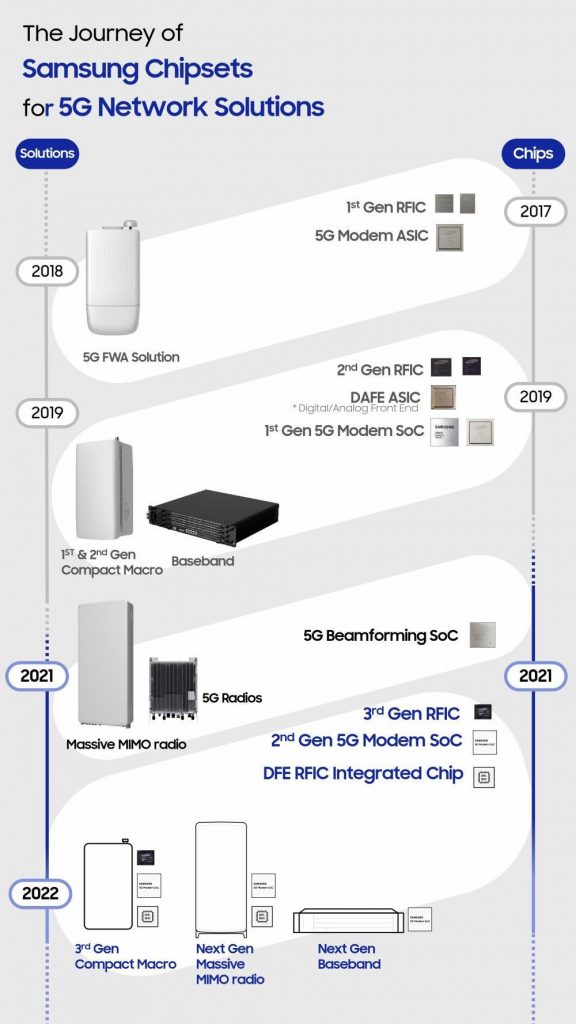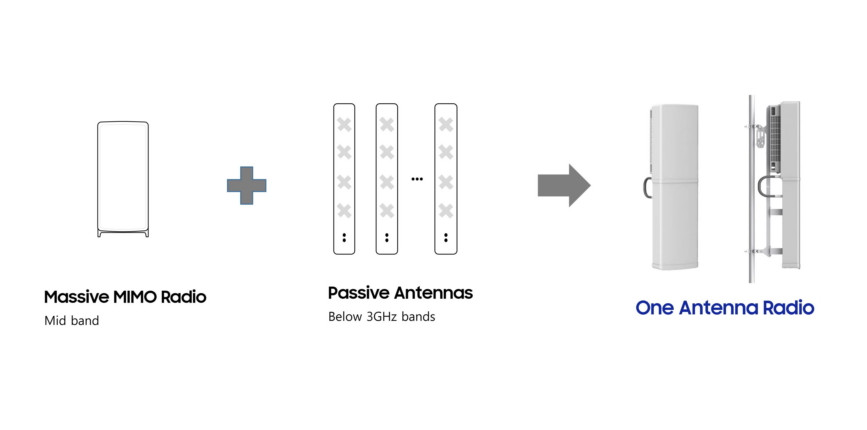
At its Samsung Networks: Redefined virtual event, Samsung introduced new chipsets that will be used in its next generation 5G solutions. The new 3GPP Rel.16 compliant chipsets consist of a third generation mmWave Radio Frequency Integrated Circuit (RFIC) chip, a second generation 5G modem System-on-Chip (SoC) and a Digital Front End (DFE)-RFIC integrated chip.
Samsung’s newly-introduced chips include:
- 3rd Generation mmWave RFIC: Supports both 28GHz and 39GHz spectrums, and will be embedded in Samsung’s next generation 5G Compact Macro. Incorporates advanced technology that reduces antenna size by nearly 50%, maximizing the 5G radio’s interior space. Improves power consumption, resulting in a more compact-sized, lightweight 5G radio. Output power and coverage of the new RFIC chip have increased, doubling output power of the next generation 5G Compact Macro.
- 2nd Generation 5G Modem SoC: Will enable Samsung’s forthcoming baseband unit to have twice the capacity, while cutting power consumption in half per cell, in comparison to the previous generation. Will support both below-6GHz and mmWave spectrums, offer beamforming and increased power efficiency for Samsung’s next generation 5G Compact Macro and Massive MIMO radio, while reducing the size for both solutions.
- DFE-RFIC Integrated Chip: Combines RFIC and DFE functions for both below-6GHz and mmWave spectrums. Not only doubles frequency bandwidth, but also reduces the size and increases output power for Samsung’s next generation solutions, including 5G Compact Macro.
Samsung latest chips will power Samsung’s next-generation products for 5G build out, including the next generation 5G Compact Macro, Massive MIMO radios and baseband units and will be commercially available in 2022.

Samsung One Antenna Radio

Samsung also unveiled a new radio designed to help mobile operators overcome the challenges they face in deploying 5G networks. The new One Antenna Radio features integrated antennas, providing operators with the ability to simplify and speed up 5G installations by consolidating a 3.5GHz Massive MIMO radio with low-band and mid-band passive antennas into a single form factor.
Samsung said that its all-in-one radio will address varied environmental and site demands–easing installation, saving space and reducing OPEX for operators. The new solution will become part of Samsung’s Radio Access Network (RAN) portfolio in early 2022, initially targeting the European market.
6G
Samsung also shared the vision of 6G technology, and the world it will help create. The company said that led 5G research and development even before 4G deployments, and is already preparing for 6G. Samsung recently demonstrated the 6G Terahertz (THz), end-to-end 140GHz wireless link using a fully digital beamforming solution in collaboration with the University of California, Santa Barbara (UCSB).
